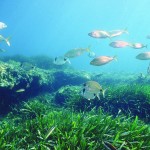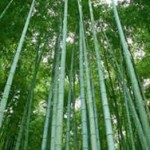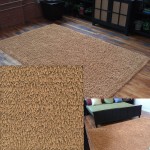 To sum it up in two words; “very carefully”! It sounds like a cheap excuse for an answer but knowledgeable and professional carpet cleaning companies will agree, proceed very carefully. With the growing demand for natural materials and smart environmental choices, conventional carpet cleaning methods may not be the answer anymore.
To sum it up in two words; “very carefully”! It sounds like a cheap excuse for an answer but knowledgeable and professional carpet cleaning companies will agree, proceed very carefully. With the growing demand for natural materials and smart environmental choices, conventional carpet cleaning methods may not be the answer anymore.
Materials used in the construction of carpet yarns will affect their environmental status. In many cases synthetic carpet and rug fibers are made from petroleum based products. These types of fibers carry the potential to release “Volatile Organic Compounds” or VOC gases over time which can cause undesirable respiratory conditions as well as pollute the environment.
Some examples of environmentally friendly materials used for carpeting and area rugs include jute, bamboo, hemp and seagrass. Better known natural fibers include wool and organically grown cotton. As the demand for more environmentally conscious construction materials increases, so too will the demand for the skilled and educated cleaning technician with the proper equipment and cleaning compounds.
Considered extremely durable, seagrass grows underwater, is not chemically treated and Seagrass carpets come in many different and decorative colors. Bamboo carpets and rugs, sometimes called Moso, also come in a variety of colors ranging from a very rich black and crimson to tan or brown. Bamboo reaches full maturity in only six years and its scraps can be burned for fuel. Jute carpet is considered one of the strongest and softest of all plant fiber carpets. Bundled, soaked and then sun dried, Jute is made from the skin of the plant’s stem and is second in popularity only to cotton.
These natural fibers can be easily and irreversibly damaged by conventional Hot Water Extraction (HWE) cleaning methods. New technology coming on the scene is called “Low Moisture” or Very Low Moisture (VLM) carpet cleaning. This method employs a minimal amount of water, encapsulating cleaning agents, cylindrical rotating brush machines and absorbent pads. There are also foams and soil absorbing compounds which are sometimes referred to as “Dry Cleaning” the carpet.
So how does the consumer clean, maintain and care for these Eco Friendly carpets and rugs? “Very Carefully”! A thorough vacuuming is recommended for daily carpet care. Spots and spills need to be blotted dry quickly using an absorbent white towel. Avoid using water. Dry spots on the carpet can be blotted with a damp towel and then dried quickly by carefully using a hair drier. However each fiber will have its own unique characteristics so always check your manufacturers’ recommendations and consult an IICRC/Clean Trust certified carpet cleaning professional.
In conclusion, the demand and popularity of rugs, fabrics and carpet made from renewable sources is increasing. The choice of fibers, colors, styles, durability and feel will certainly present some challenging and unique situations. Services Etcetera Carpet & Upholstery Cleaning of Hazleton PA is dedicated to meeting the carpet cleaning requirements of both residential and commercial customers. For more information concerning natural fibers used in the construction of carpets and rugs visit http://www.naturalarearugs.com/.